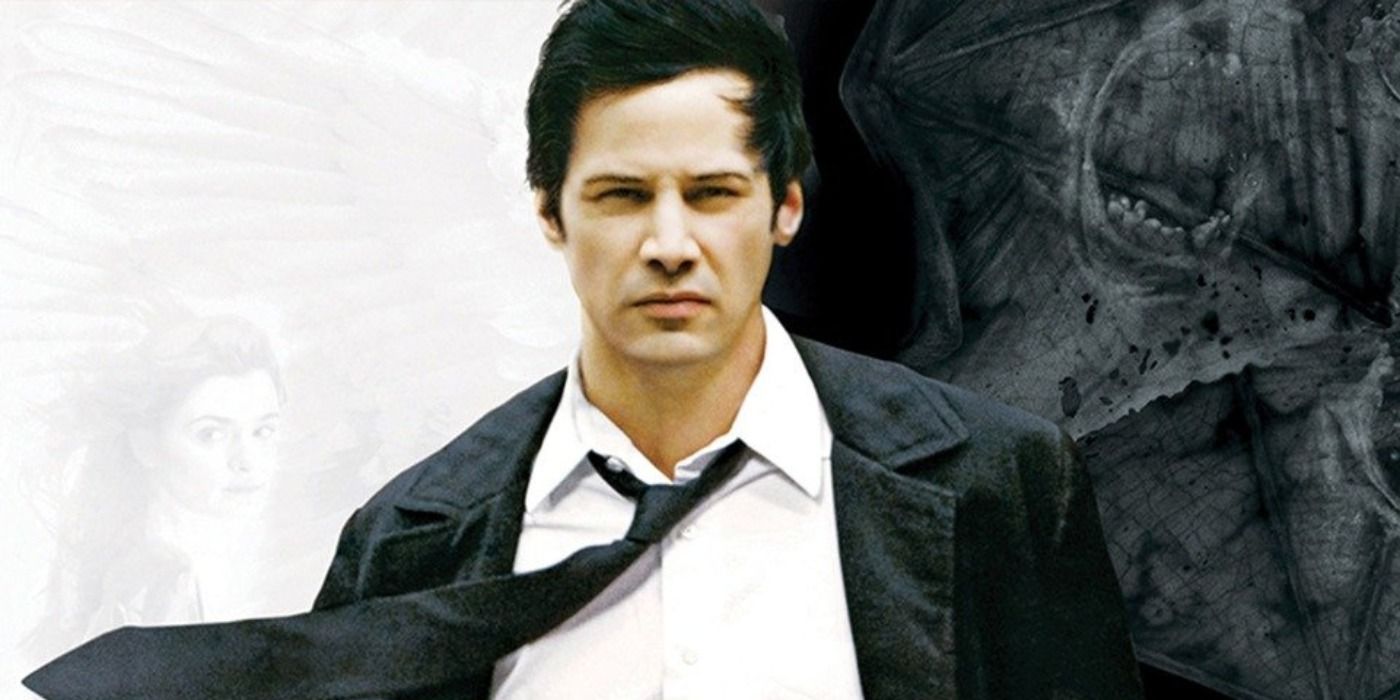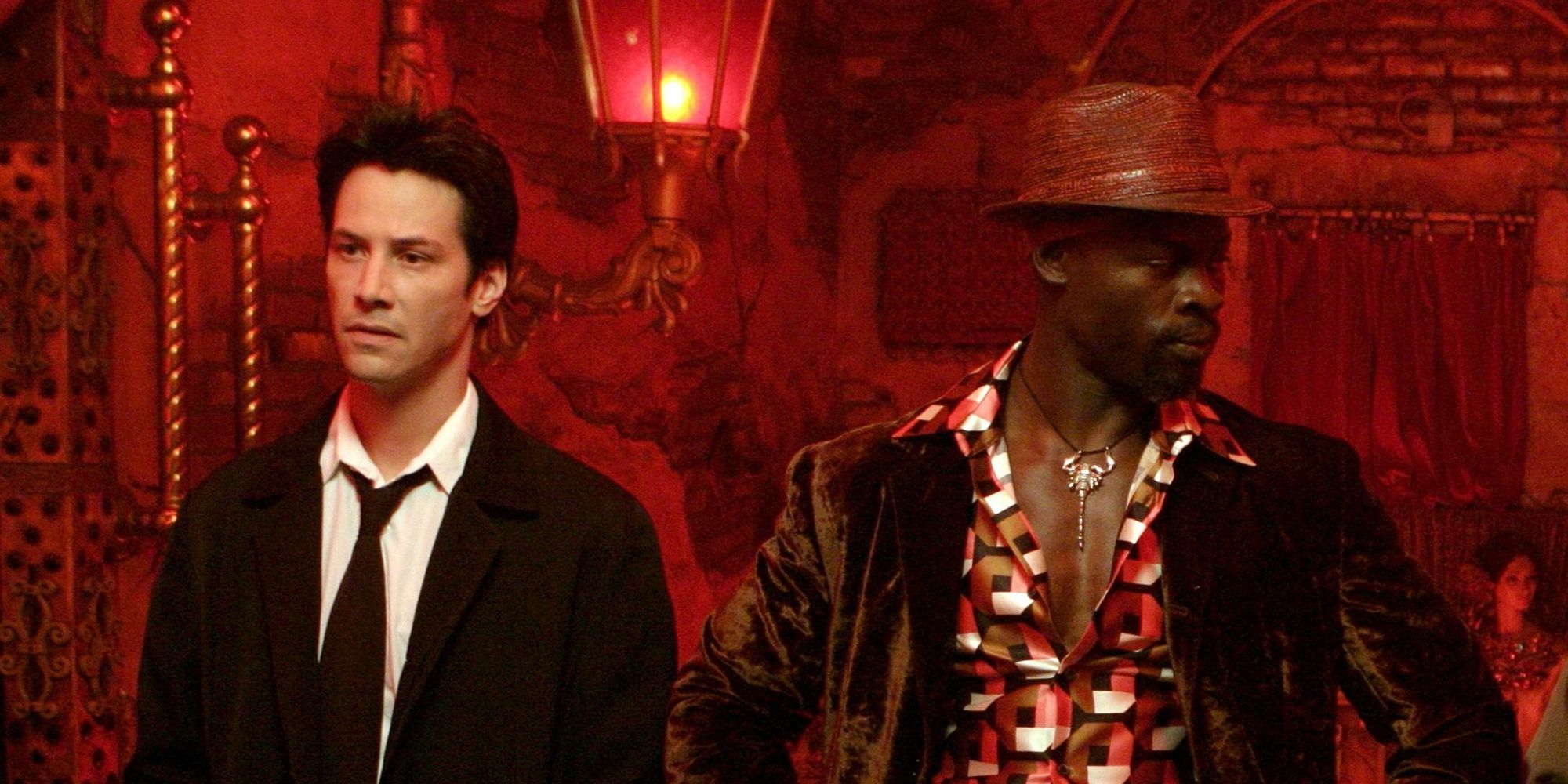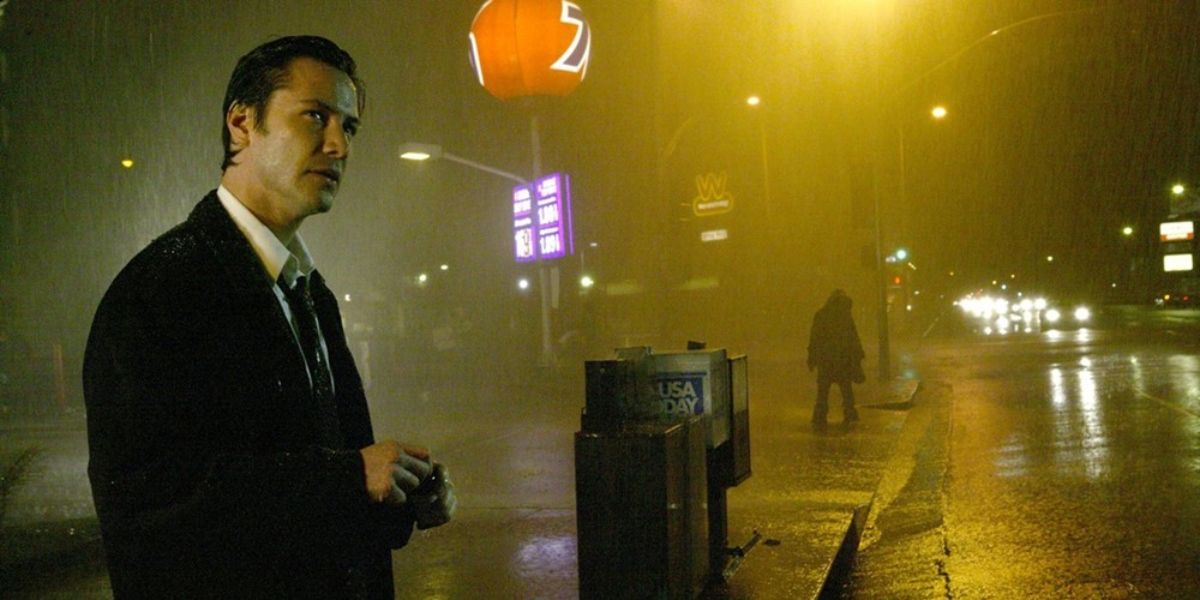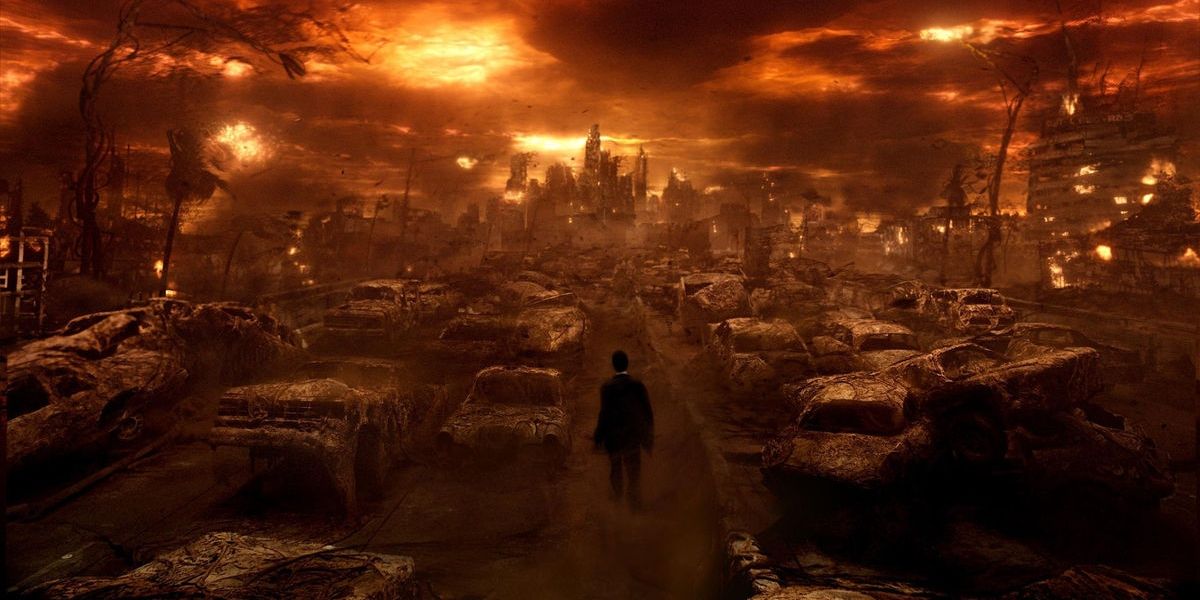While far removed from its source material, the 2005 film Constantine has withstood the test of time as a solid piece of horror filmmaking. Directed by Francis Lawrence and starring Keanu Reeves as the titular occult detective and exorcist, Constantine is a slick, well-made, visually-distinct DC action-thriller. Borrowing certain plot points and character details from the original Vertigo comics (like Constantine's chain-smoking and lung cancer), the film's script sees Keanu Reeves' John Constantine take up arms against the forces of Hell in a battle for humanity's future. The film transplants the originally British anti-hero from his home country to the United States, situating him in the most thematically-appropriate place possible: the City of Angels.
Combining Reeves' star power, grotesque CGI creature designs and fast-paced action, Constantine succeeds as a unique, standalone thriller. The film is, in many ways, DC’s answer to Marvel’s Blade film trilogy, which had its final installment released shortly before Constantine. Dark in its tone and aesthetic, Lawrence's handling of special effects horror buttressed a character study focusing on one man's loss of innocence and eventual redemption. There are many strong qualities in Constantine that, with a sequel in the works, rightly deserve to be carried over into the second installment.
Djimon Hounsou Did Justice to Papa Midnite
While Constantine focuses much of its running time on the title character -- a troubled, disillusioned demon hunter sentenced to eternal damnation -- the film takes time to highlight a variety of supporting characters. Rachel Weisz -- the second most prominent character in Constantine -- plays a police detective caught in the center of a monstrous series of events, reluctantly reaching out to Constantine for help. Constantine's small circle of friends and acquaintances plays a part as well, representing a running theme from the comics: people who get close to Constantine eventually end up paying dearly for it. One supporting character, Papa Midnite -- portrayed by the pitch perfect Djimon Hounsou -- is a fellow dark magic practitioner, nightclub owner, and occasional ally.
Instilling the morally ambiguous character with a strong screen presence using both his demeanor and gravelly voice, Hounsou's Midnite turns out to be one of the movie's most comics-accurate elements. Hounsou -- a veteran of both DC and Marvel cinema, having played the Wizard Shazam for DC and a Kree warrior in the MCU -- seems to relish the opportunity to play an ethically gray badass. A sequel without Hounsou's Midnite would be a gravely missed opportunity. Iconic British actor Tilda Swinton -- who recently starred in Guillermo del Toro's Pinocchio -- brought something truly special to the role of Gabriel, the mesmerizing, elegant archangel who refuses to help the sick and dying Constantine. While he only appeared in two scenes near the end, Peter Stormare's magnetic, sneering interpretation of Lucifer was a dedicated scene-stealer and a memorable characterization of pure evil.
Constantine Made the City of Angels its Own Character
If the second Constantine film sends John across the globe, the first installment's main location -- Los Angeles -- should still be given its due. While there's been a longstanding image in pop culture of the city as a sunny, modern place, Lawrence turned LA inside out, setting many of the film's key action set pieces at night or in grimy, unpleasant places. Constantine's world has a gritty immediacy that helps set the story's tone from the get-go. Most of the interiors feel lived-in and weathered, adding a measure of realism and weight to an otherwise over-the-top thriller. Under Lawrence's direction, LA is its own character and, like many of the film's characters, comes with its own inherent darkness. (Interestingly, an animated film about John Constantine, titled City of Demons, would bring Matt Ryan's comics-accurate take on the character to LA over a decade later, with devastating results.)
The film also gave audiences a peek at Hell, which was presented as a post-apocalyptic, demon-ridden reflection of LA -- a wasteland of epic proportions. Sticking to a visual template (real life Los Angeles) gave Constantine's version of Hell an effective aesthetic framework, making for some impactful, surrealistic moments. For most of the story, the promise of eternal damnation hangs heavily over Constantine, but he nonetheless makes brief trips to the underworld in search of information. By the end, when he's finally granted passage into Heaven, LA's buildings are used again -- except this time, much of the city is obscured by brilliant white clouds. This visual language helped Constantine maintain its own subverted sort of realism. The film's illustration of both Heaven and Hell, following specific color schemes and visual cues (red-orange skies in Hell, pearly-white buildings in Heaven), could be adapted to other real world places -- if Constantine does end up operating outside city limits.
DC is Big Enough for Two John Constantines
A jarring change to Constantine's character gave him the supernatural power to see ghosts and demons in the world of the living. This change ended up working for the movie. Playing a role in his tragic backstory, and helping to explain the occult detective's bristly, sardonic demeanor, Keanu Reeves' Constantine is as reluctant a hero as they come. The John Constantine of the Hellblazer comics is often presented in a similar light, but with a bit more charm and approachability as opposed to Keanu's jaded, curmudgeonly loner. This ability (not present in the comics) is something that could be explored and expanded on in the sequel, maybe even evolving into something more powerful and, concurrently, more costly.
With DC's films and TV shows currently experiencing various ongoing changes, the announcement of a second Constantine after more than a decade speaks to the character's truly magical longevity. Even though NBC's Constantine led to many Hellblazer fans now standing behind Matt Ryan as their one and only John Constantine, Keanu Reeves, who did a bit of his own research into the source material, was also able to go straight for the character's emotional core. While Matt Ryan's dedicated, brilliant, years-long tenure as Constantine showcased a comics-accurate version of the trench coat-wearing occultist, Keanu's performance didn't betray John's torment or vulnerability, translating the story into a distinctly American context. A sequel, with both star and director returning to their respective roles, can develop the original film's strengths while reveling in the fun of catching up with an older, perhaps even wiser, John Constantine.




